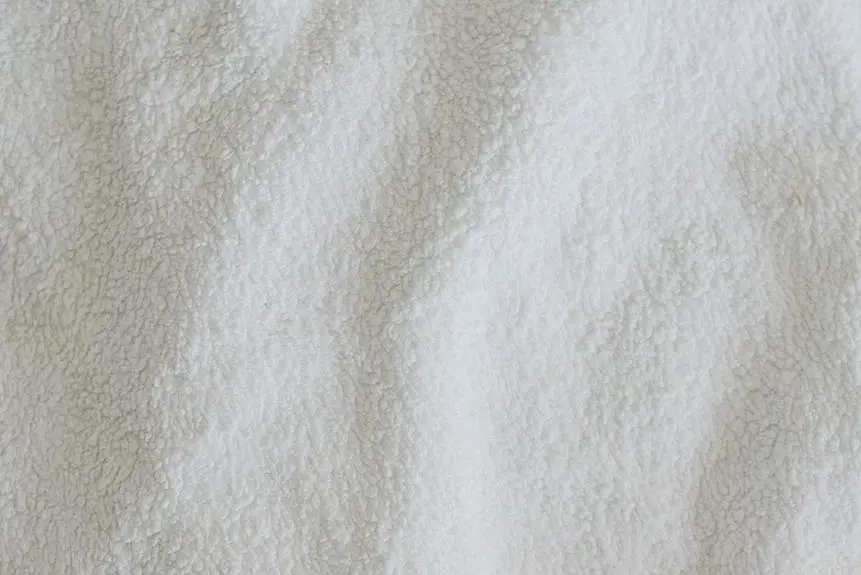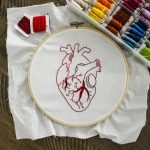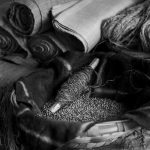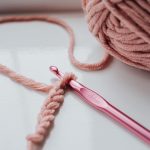When you think of durable, versatile fabrics, poly woven fabric might just come to mind. Whether you're a seasoned textile enthusiast or just starting to explore the world of fabrics, understanding the intricacies of poly woven fabric is essential.
From its unique weave structure to its wide range of applications, mastering the knowledge of poly woven fabric opens up a world of possibilities for your projects. In this brief guide, we'll delve into the essential details you need to know about poly woven fabric, equipping you with the expertise to make informed decisions and unleash your creativity.
Let's embark on a journey to unravel the fascinating realm of poly woven fabric.
Key Takeaways
- Poly woven fabric is durable, flexible, and resistant to wrinkles, making it ideal for products that require strength and resilience.
- It has an exceptional strength-to-weight ratio and excellent resistance to mildew, UV rays, and chemicals.
- The tightly integrated structure of poly woven fabric provides resistance to tearing and fraying, while still offering robust support without adding unnecessary bulk.
- Sustainability is an important factor in the production of poly woven fabric, with regulations governing production, sustainable practices within the industry, and the fabric's recyclability being key considerations.
Characteristics of Poly Woven Fabric
When working with poly woven fabric, you'll notice its durability, flexibility, and resistance to wrinkles. These characteristics are a result of advanced textile technology, making poly woven fabric an excellent choice for a wide range of applications.
The durability of poly woven fabric makes it ideal for products that require strength and resilience. Its versatility allows it to be used in various industries, from fashion to industrial applications. This fabric's ability to withstand wear and tear makes it a sustainable option, as it has a longer lifespan than many other materials, reducing the need for frequent replacements.
Textile technology has played a crucial role in enhancing the sustainability of poly woven fabric, making it an attractive choice for environmentally conscious consumers and industries.
Whether it's for creating long-lasting apparel, sturdy bags, or reliable industrial products, the durability, versatility, and sustainability of poly woven fabric make it a top choice for those seeking a reliable and long-lasting material.
Common Uses and Applications
Explore the myriad of ways you can utilize poly woven fabric in your projects and products. Poly woven fabric is incredibly versatile and finds applications across various industries. Check out the table below for some common uses and applications of poly woven fabric:
| Industry | Application |
|---|---|
| Industrial packaging | Used for making flexible intermediate bulk containers (FIBCs) for the transportation and storage of dry, flowable products such as sand, fertilizers, and grains. |
| Transportation | Employed in the manufacturing of durable and tear-resistant tarpaulins, truck covers, and cargo nets for securing and protecting goods during transit. |
| Geotextiles | Utilized in the construction of roads, embankments, and retaining structures to provide soil stabilization, erosion control, and drainage. |
| Agriculture | Commonly used for producing ground covers, silt fences, and shade cloth, offering protection from harsh weather conditions, controlling soil erosion, and promoting crop growth. |
Poly woven fabric's strength, durability, and resistance to tearing make it an ideal choice for these applications. Whether you are involved in industrial packaging, transportation, geotextiles, or agriculture, poly woven fabric can enhance the quality and longevity of your products and projects.
Advantages of Poly Woven Fabric
The strength, durability, and resistance to tearing of poly woven fabric make it an ideal choice for enhancing the quality and longevity of your products and projects. One of the key advantages of poly woven fabric is its exceptional strength-to-weight ratio, providing robust support without adding unnecessary bulk. This makes it perfect for a wide range of applications where strength and durability are essential, such as in industrial packaging, construction, and geotextiles. Additionally, poly woven fabric offers excellent resistance to mildew, UV rays, and chemicals, ensuring that your materials remain protected even in challenging environments.
Another advantage lies in the manufacturing process of poly woven fabric. The weaving technique used produces a tightly integrated structure, resulting in a fabric that's highly resistant to tearing and fraying. This not only extends the lifespan of the fabric but also reduces the need for frequent replacements, saving both time and money in the long run. Furthermore, the versatility of poly woven fabric allows for customization in terms of colors, patterns, and coatings, providing tailored solutions to meet specific project requirements.
Key Properties to Consider
To fully understand the suitability of poly woven fabric for your specific needs, consider its key properties in terms of strength, durability, and resistance to environmental factors. When it comes to fabric selection, these properties are crucial in determining the fabric's performance and longevity. Understanding the manufacturing process of poly woven fabric will also provide insight into its key properties.
Here are the key properties of poly woven fabric to consider:
- Tensile Strength: Poly woven fabric is known for its exceptional tensile strength, making it highly durable and capable of withstanding heavy loads and stress without tearing or stretching excessively.
- Abrasion Resistance: This fabric exhibits excellent resistance to abrasion, ensuring that it maintains its integrity even in high-wear applications, making it suitable for a wide range of uses.
- UV Resistance: Poly woven fabric is often treated to be UV resistant, protecting it from the damaging effects of prolonged exposure to sunlight, making it ideal for outdoor applications.
- Moisture Resistance: The fabric's resistance to moisture makes it suitable for environments where exposure to water or humidity is a concern, ensuring that it remains robust and reliable even in challenging conditions.
Understanding these key properties will empower you to make informed decisions when selecting poly woven fabric for your specific application.
Care and Maintenance Tips
Considering the durability and longevity of poly woven fabric, proper care and maintenance are essential to ensure its continued performance. When it comes to stain removal, it's important to act quickly. Blot liquid stains with a clean, dry cloth, and then spot clean with mild detergent and water. For oil-based stains, use an absorbent material to lift the stain, followed by a gentle dabbing with a cleaning solution. Avoid rubbing, as it can spread the stain and damage the fabric. Additionally, adhering to proper storage guidelines is crucial in maintaining the fabric's integrity. Store poly woven fabric in a cool, dry place away from direct sunlight to prevent discoloration and weakening of the fibers. Here are some care and maintenance tips to keep your poly woven fabric in top condition:
| Stain Removal | Storage Guidelines |
|---|---|
| Act quickly to blot and spot clean stains. | Store in a cool, dry place away from direct sunlight. |
| Use mild detergent and water for liquid stains. | Avoid storing in damp or humid environments. |
| Lift oil-based stains with an absorbent material. | Keep away from sharp objects that may cause snags or tears. |
| Avoid rubbing the fabric to prevent spreading the stain. | Ensure proper air circulation to prevent mold and mildew. |
| Seek professional cleaning for tough or set-in stains. | Refrain from using plastic bags for long-term storage. |
Environmental Impact and Sustainability
When it comes to the environmental impact and sustainability of poly woven fabric, you should consider its production processes and recyclability.
The manufacturing processes of poly woven fabric play a significant role in its environmental impact. From the extraction of raw materials to the energy-intensive weaving process, each step has the potential to impact the environment.
Additionally, the recyclability of poly woven fabric is a crucial factor in determining its sustainability. Understanding how and if poly woven fabric can be recycled can greatly influence its environmental footprint.
Here are some key points to consider:
- Environmental Regulations: Understanding the environmental regulations that govern the production of poly woven fabric can provide insight into its impact on the environment.
- Manufacturing Processes: Learning about the manufacturing processes involved in creating poly woven fabric can help you understand its carbon footprint and environmental implications.
- Sustainable Practices: Exploring sustainable practices within the poly woven fabric industry can provide valuable information on environmentally friendly alternatives and processes.
- Recyclability: Assessing the recyclability of poly woven fabric can guide your decision-making towards more sustainable options.
Choosing the Right Poly Woven Fabric
When it comes to choosing the right poly woven fabric, durability and strength are paramount. You want a fabric that can withstand the demands of your specific application, whether it's for outdoor furniture, industrial packaging, or another use.
Understanding the suitability of the fabric for your intended purpose is key to making the right choice.
Durability and Strength
To ensure the durability and strength of your poly woven fabric, look for a material that's specifically designed for heavy-duty use. When choosing the right poly woven fabric, consider the following:
- Tensile Strength: Opt for a fabric with high tensile strength to withstand stretching and pulling without tearing or ripping.
- Abrasion Resistance: Look for fabrics with excellent abrasion resistance to ensure longevity, especially if the fabric will be subjected to constant friction or rubbing.
- UV Resistance: Select a fabric that offers UV resistance to prevent degradation from prolonged exposure to sunlight, ensuring optimal performance over time.
- Water Resistance: Choose a fabric with water-resistant properties to maintain its strength and integrity in damp or wet conditions, making it suitable for a variety of applications.
Suitability for Applications
Considering the various applications for poly woven fabric, prioritizing specific performance characteristics is crucial for selecting the most suitable material.
When it comes to industrial applications, durability testing becomes an essential factor. For heavy-duty applications such as construction, landscaping, or transportation, poly woven fabric with high tensile strength and tear resistance is essential.
Additionally, for applications that require protection against environmental factors, UV resistance and water repellency are paramount.
It's important to note that not all poly woven fabrics are suitable for all industrial applications, so understanding the specific requirements of the intended use is crucial.
Innovations and Future Trends
As of the present, you'll find that poly woven fabric is continuously evolving with new technologies and sustainable practices driving future trends in the industry. The future of poly woven fabric is an exciting one, with several emerging technologies and market trends shaping its trajectory. Here's what you can look forward to:
- Advanced Sustainable Practices: Innovations in eco-friendly dyeing processes and the use of recycled materials are set to revolutionize the sustainability of poly woven fabric, catering to the growing demand for environmentally responsible products.
- Smart Textiles: The integration of technology into poly woven fabric, such as conductive yarns for interactive clothing and intelligent textiles for medical and sportswear applications, is poised to transform the industry.
- Customization and Personalization: With advancements in digital printing and weaving technologies, the future holds endless possibilities for customized designs and personalized fabric creations, catering to individual preferences and niche market demands.
- Performance Enhancements: The development of poly woven fabric with enhanced durability, breathability, and moisture-wicking properties is set to meet the evolving needs of various industries, including activewear, outdoor gear, and industrial applications.
Frequently Asked Questions
Can Poly Woven Fabric Be Used for Outdoor Furniture Upholstery?
Yes, poly woven fabric is suitable for outdoor furniture upholstery. It offers easy maintenance and cleaning, while also providing excellent weather resistance and longevity. This durable fabric is a great choice for outdoor use.
Are There Any Potential Health Concerns Associated With Prolonged Exposure to Poly Woven Fabric?
Prolonged exposure to poly woven fabric could potentially lead to skin irritation or allergies due to chemical exposure. Ensure fabric safety testing to mitigate risks. Consider the environmental impact and proper disposal options.
How Does Poly Woven Fabric Compare to Other Synthetic Fabrics in Terms of Durability?
Poly woven fabric offers superior durability compared to other synthetic fabrics. To maintain its longevity, regularly vacuum or brush off loose dirt and avoid excessive heat during washing and drying. These maintenance tips will help prolong its lifespan.
Can Poly Woven Fabric Be Easily Dyed or Printed With Custom Designs?
Yes, poly woven fabric can be easily dyed using various dyeing processes such as direct, vat, or disperse dyeing. Additionally, it is receptive to custom printing techniques like digital printing, allowing for versatile design options.
What Are the Best Practices for Recycling or Disposing of Poly Woven Fabric?
When recycling poly woven fabric, check for local facilities that accept it. Ensure proper sorting to prevent contamination. For disposal, explore options like repurposing or donating. Consider upcycling into new products to reduce environmental impact.
- How to Use Green Herringbone Fabric for a Touch of Earthy Elegance - June 19, 2025
- A Guide to Buying Herringbone Fabric by the Yard Online - June 19, 2025
- Is Herringbone a Good Fabric for Shirts? A Detailed Analysis - June 19, 2025






